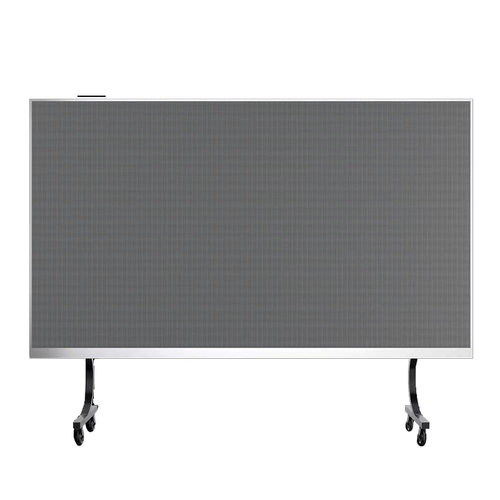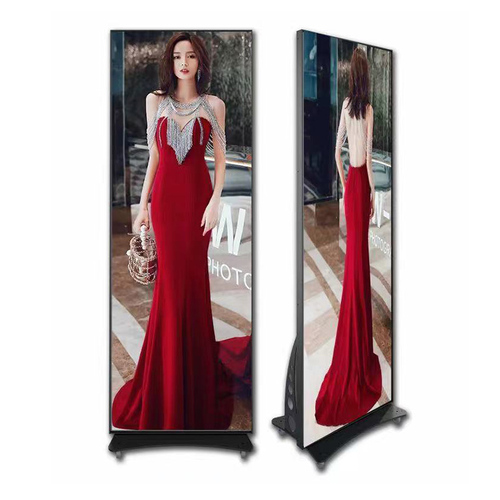How to choose the right LED display for your application?
Views : 18
Update time : 2025-10-12
Choosing the right LED display requires balancing technical specs, environmental demands, and budget while aligning with your core application. Here’s a professional framework to guide your decision:
1. Define Primary Use Case
(This dictates all other choices)
| Application | Critical Needs | Example Specifications |
|---|---|---|
| Virtual Production | Color accuracy (DCI-P3/Rec.2020), low reflectivity, flicker-free | COB/MicroLED, P1.2–P1.8, 4K HDR, 1,500–2,500 nits |
| Control Room | Fine detail, 24/7 reliability, wide viewing angles | SMD/COB, P0.9–P1.5, redundant power, ≤1.5mm seam |
| Live Events/Rental | Portability, durability, high brightness | Lightweight SMD, P2.5–P4, 5,000–10,000 nits |
| Digital Signage | Weatherproofing, energy efficiency, low maintenance | Outdoor SMD, P4–P10, 6,000–10,000 nits, IP65 |
| Broadcast Studio | Camera-friendly uniformity, smooth grayscale | Brompton/NovaStar-driven, P1.5–P2.5, 3,500 nits |
2. Prioritize Technical Specifications
-
Pixel Pitch (P):
- Formula: Min. Viewing Distance (m) = Pitch (mm) × 1.5
(e.g., P3 screen = min. 4.5m viewing distance). - Fine-pitch (≤P1.5): Studios, boardrooms.
- Medium (P1.5–P4): Auditoriums, retail.
- Large (≥P4): Stadiums, billboards.
- Formula: Min. Viewing Distance (m) = Pitch (mm) × 1.5
-
Brightness (Nits):
- Indoor: 800–1,500 nits
- Outdoor/Sunlit: 5,000–10,000 nits
- HDR Content: ≥1,000 nits + local dimming.
-
Refresh Rate & Gray Scale:
- Broadcast/VP: ≥3,840Hz refresh, 16-bit+ processing.
- Gaming/Live Sports: ≥1,920Hz to avoid motion blur.
3. Match Technology to Environment
| Factor | Indoor Solution | Outdoor Solution |
|---|---|---|
| Brightness | 800–2,500 nits | 5,000–10,000 nits |
| IP Rating | IP20/IP30 | IP65/IP67 |
| Temperature Range | 0°C to 40°C | -30°C to 50°C |
| Anti-Glare | Low-reflection coating | Matte black faceplates |
4. Critical Hardware Considerations
-
LED Packaging:
- SMD (Surface-Mount): Cost-effective, versatile (most common).
- COB (Chip-on-Board): Better heat dissipation, dust/impact resistant (ideal for VP/control rooms).
- GOB (Glue-on-Board): Added protection for harsh environments.
- MicroLED: Superior contrast, pixel density (premium cost).
-
Cabinet Design:
- Rental: Lightweight magnesium alloy, quick-lock mechanisms.
- Fixed Install: Steel/aluminum, front/service access.
- Curved/Organic Shapes: Flexible magnetic cabinets.
-
Processor/Controller:
- High-End: Brompton Tessera (calibration, HDR).
- Mid-Range: NovaStar Apex (rental/install balance).
- Budget: Colorlight (fixed signage).
5. Budget & Total Cost of Ownership (TCO)
- Upfront Costs: Panels, processor, mounting, calibration tools.
- Operational Costs: Power consumption (~300W/m² for indoor), cooling.
- Lifespan/Longevity:
- Quality Panels: 100,000+ hours (11+ years at 24/7).
- Cheap Displays: May degrade in 2–3 years (color shift, dead LEDs).
- Maintenance:
- Rental: Spare modules, quick-swap design.
- High-Install: Front-access cabinets (>10m height).
Decision Checklist
- Content Type: Video/data/static? → Dictates refresh rate & color depth.
- Ambient Light: Bright office vs. dark studio? → Nits requirement.
- Viewing Distance: Closest viewer position? → Pixel pitch calculation.
- Calibration Needs: Broadcast-critical? → Prioritize Brompton/COB.
- Physical Access: Ceiling mounts vs. ground-stack? → Cabinet weight/serviceability.
⚠️ Pro Tip: Always request an on-site demo with your content. Lab specs ≠ real-world performance!
Example Scenarios
- Corporate Lobby Signage:
P2.5 SMD, 1,500 nits, NovaStar controller, front-service cabinets. - Sports Arena Perimeter:
P6 IP65 SMD, 7,000 nits, redundant power, Colorlight processing. - Film Stage Volume:
COB MicroLED P1.5, Brompton Tessera, 16-bit HDR, matte finish.
By aligning these factors, you’ll avoid overpaying for unnecessary specs while ensuring reliability for your use case. Always partner with manufacturers offering calibration support and 3–5 year warranties!
Related News
 What is meant by LED display?
What is meant by LED display?
2025-10-12
Here’s a clear, technical explanation of what an LED display means, tailored for professiona
 How to tell if my LED screen needs calibration?
How to tell if my LED screen needs calibration?
2025-10-12
Here’s how to spot the clear signs that your LED screen needs calibration,
 How often should LED screens be calibrated?
How often should LED screens be calibrated?
2025-10-12
The optimal calibration frequency for LED screens depends on several factors, including environment
 How do you calibrate LED screens?
How do you calibrate LED screens?
2025-10-12
Calibrating LED screens is a multi-stage technical process focused on achieving uniform brightness,
